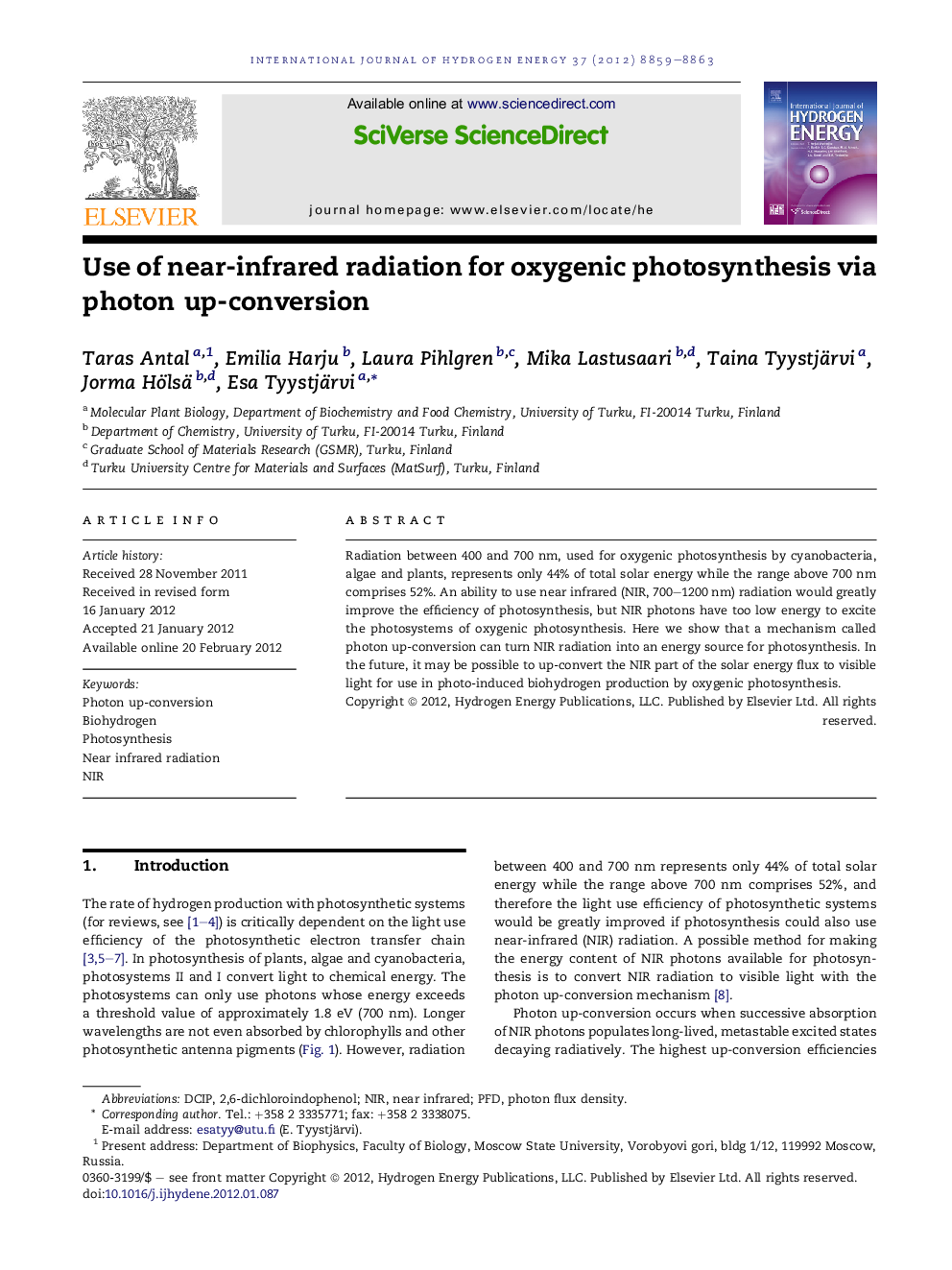| Article ID | Journal | Published Year | Pages | File Type |
|---|---|---|---|---|
| 1275388 | International Journal of Hydrogen Energy | 2012 | 5 Pages |
Radiation between 400 and 700 nm, used for oxygenic photosynthesis by cyanobacteria, algae and plants, represents only 44% of total solar energy while the range above 700 nm comprises 52%. An ability to use near infrared (NIR, 700–1200 nm) radiation would greatly improve the efficiency of photosynthesis, but NIR photons have too low energy to excite the photosystems of oxygenic photosynthesis. Here we show that a mechanism called photon up-conversion can turn NIR radiation into an energy source for photosynthesis. In the future, it may be possible to up-convert the NIR part of the solar energy flux to visible light for use in photo-induced biohydrogen production by oxygenic photosynthesis.
► NIR radiation can be used to drive oxygenic photosynthesis via photon up-conversion. ► Solar NIR radiation may provide energy for photosynthesis-based hydrogen production. ► NIR radiation could be converted to photosynthetically active light under a layer of algae.
